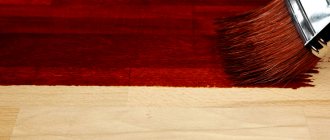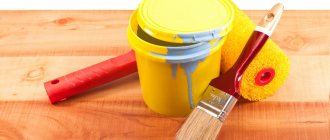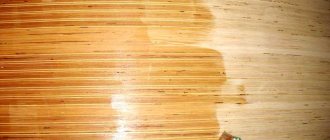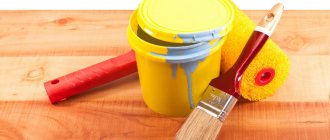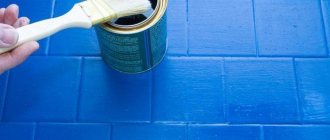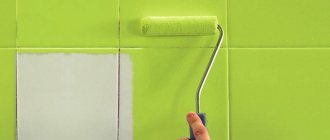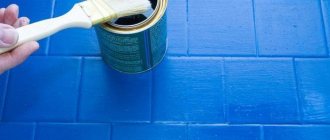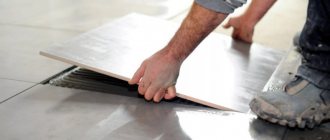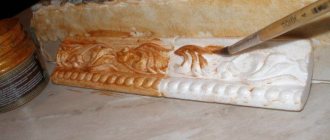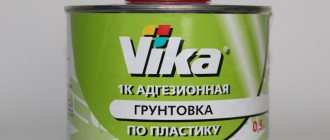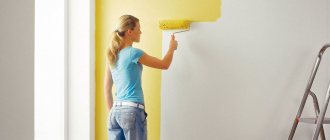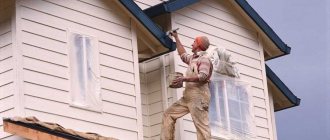Do I need to paint plywood?
Along with other finishing materials, plywood has a number of advantages, including its low cost, environmental friendliness, strength, and aesthetic beauty. However, although it has good water resistance, it will not be able to withstand direct contact with water or high humidity for long.
Therefore, painting a plywood floor is one of the mandatory procedures if you are laying a finished floor covering.
Before applying any dye or any type of impregnation, the surface of the glued veneer needs to be pre-grinded to eliminate roughness and defects.
For these purposes, you should arm yourself with simple equipment, including:
- brushes and paint rollers;
- emery;
- spray gun;
- soft washcloths;
- containers for paint.
Questions
How to paint plywood inside a house?
For interior decoration, various water-based paints are used - acrylic, latex. You can paint the canvas with wood enamel, otherwise called pentaphthalic. The composition is easy to apply, penetrates well between the fibers, and dries instantly.
What paints can you use to paint on plywood?
The wood canvas holds oil and acrylic compositions well, even gouache and watercolor. The sheet must be at least 6 mm thick. The surface must first be primed or impregnated with drying oil similar to oil.
Painting on the surface
How to paint plywood white?
To obtain a high-quality white surface without visible minor defects, matte paint is required. Glossy compounds are less able to hide flaws in the base. Before work, you also need to carefully prepare the surface.
How to paint plywood on the floor?
Elastic paint is well suited for finishing flooring. This composition has a rubber-like structure, a shiny appearance, and is resistant to ultraviolet radiation. The pigment forms a thin film, hides minor flaws, and conceals unevenness.
How to paint plywood against moisture?
The easiest way to protect the surface from moisture is to impregnate the sheet with drying oil or acrylic varnish. Another effective, but more expensive option is to paint the canvas with epoxy resin.
How to paint plywood furniture?
It is better to paint furniture items with water-based compounds. Such emulsions are easy to apply, dry quickly, and do not have a strong unpleasant odor.
Plywood sheet is an inexpensive material widely used for various purposes. Proper surface treatment increases the service life of the product, be it a floor or furniture made of plywood. Taking into account the characteristics of consumables allows you to quickly paint and avoid unpleasant consequences.
Processing plywood before painting
You can maximize the service life of a plywood floor if you thoroughly prepare the surface for painting.
This process includes several sequential operations:
- initial sanding with sandpaper No. 80;
- applying an acrylic primer followed by drying;
- treating irregularities and flaws with acrylic putty for woodwork and drying;
- re-grinding with sandpaper No. 80-120;
- coating with a layer of primer and drying.
Upon completion of all these operations, you can proceed directly to painting the plywood (read also: “How to treat plywood on the floor - is it necessary to impregnate”).
It is worth noting that such a thorough pre-treatment is not necessary, however, applying an acrylic primer before painting the plywood floor will protect it from the harmful effects of water and the growth of mold and mildew.
Are all steps necessary?
Most craftsmen, when processing large areas of plywood, greatly simplify the process, limiting themselves to sanding, priming and subsequent painting. Putty is used only in case of major damage. Preparation of the plywood base before painting ensures:
- additional strength;
- moisture resistance;
- beautiful smooth surface;
- longer possibility of using the product.
In addition, putty and primer are cheap and significantly help reduce paint consumption. The plywood base is very porous, has many voids, and the soil will fill them. If there is no soil, then the voids will be filled with dye, which is more expensive and cannot greatly increase strength.
Primer
Alkyd primer is most conveniently applied with a roller. Once it's dry, you can start painting the plywood with alkyd or acrylic paint. The drying time for alkyd paint is slightly longer than for acrylic paint.
If you reduce the number of preparatory steps, a distinct relief may subsequently appear on the surface, which some even welcome. In exceptional cases, plywood on the floor is opened only with primer and paint.
Before covering the plywood on the floor with any dye for moisture resistance, it must be thoroughly sanded. The optimal sandpaper for this purpose is coarse sandpaper No. 80-120. This processing, carried out along the fibers, smooths out all the irregularities and roughness so that the surface becomes smooth. Additional sanding of the plywood with finer-grained sandpaper will give the plywood canvas absolute smoothness. Processing is also carried out along the fibers.
A layer of acrylic primer can be applied to a smooth surface.
Applying a primer and covering with a continuous layer of putty is carried out in order to:
- ensure uniform absorption throughout the entire plywood sheet;
- fill the cracks and voids in the inner surface of the glued veneer;
- increase the service life of the plywood covering;
- protect from destruction.
Decorative painting
The following methods exist:
- Texture selection. The technology is suitable for slabs with a pronounced texture. The simplest option is to tint the surface with stain. You can also use wax, which is applied and rubbed in a certain sequence.
- Antique processing. To do this, the plywood is painted in a dark color, a primer and a solution of a lighter shade are laid on top, after which the coating is rubbed down with sandpaper. An alternative option involves the use of patating compounds.
- Creating patterns. To do this, the surface must be painted in a single color, and then decorated with the desired pattern.
You can use your imagination when working, but it is important not to forget about the existing nuances.
Paint selection
When choosing what to paint plywood on the floor of a dacha, you should take into account where it will be placed and in what conditions it will be used (for more details: “How to cover the floor of a dacha - choosing a material, taking into account the pros and cons”). Since the main purpose of paints is to protect against moisture, the choice of paint may vary based on the characteristics of the room. Read also: “How to make a plywood floor in an apartment.”
Water-based paints are often used to paint plywood flooring. Their advantages are that they are practically odorless, easy to apply and dry quickly.
Quite often in construction, elastic paints that resemble rubber in structure are used for plywood. The appearance of the coating with this paint is glossy and does not fade over time, since it is resistant to ultraviolet radiation. In addition, you can update the old coating. Also, the advantages of elastic paints are: low susceptibility to temperature changes; masking flaws and unevenness of plywood due to the formation of a thin film.
KM selection criterion
The operating conditions of plywood are the main criterion when choosing the composition for its decoration and finishing:
- The surface is leveled with boards on the street: oil compounds and waterproof varnish are used to paint them.
- The finishing material is used indoors: the plywood is painted with acrylic paint and a water-based composition.
The decorative coating is applied with aerosol compositions and a spray gun. Inscriptions are applied with an airbrush.
Recommended paint for plywood:
- enameled oil composition - for plywood slabs outside house construction. An economical finishing option for dachas;
- Water-based CM - for decorating furniture. It is allowed because the composition is non-toxic. It also paints the leveled surface of the house from the inside;
- acrylic - for toys and crafts made from plywood, for interior items inside the house;
- enameled compounds (PF-115) - to protect slabs from temperature fluctuations.
Choosing a varnish is not difficult if you know the secrets of varnishing plywood sheets:
- before painting laminated plywood to match the natural texture of wood, powdered CM is added to the varnish;
- To preserve the original appearance of the wood, a transparent glossy varnish material is used;
- When using a plywood product for a long time, enamel compounds are used for coloring.
Recommendations for applying varnish
In addition to paint, moisture-resistant plywood for flooring can be sealed with varnish. However, before applying it, the unpainted surface must be sanded with fine-grained sandpaper. Dust generated during veneer processing should be eliminated, after which you can proceed directly to varnishing.
If the varnish is used to add gloss to a previously painted plywood floor, then you just need to make sure that the surface is completely dry. By the way, it is not necessary to apply varnish to paint with a gloss effect.
Alkyd-urethane varnish is considered optimal in terms of price-quality ratio. However, if desired, the floor can be opened with both urethane and polyurethane varnish, which have higher strength characteristics, but are also more expensive.
Varnishing includes a number of stages:
- Before applying varnish, the surface is covered with primer in 2 or 3 layers.
- Alkyd-urethane varnish for priming should be diluted 10-12% with white spirit. 1 liter of such soil is enough to treat 13-17 m2 of surface.
- Water-based varnish is diluted in a ratio of 4 parts water to 1 part varnish. 1 liter of this mixture is enough for 8-13 m2 of surface.
- As soon as the primer dries, you can apply 2-3 layers of varnish. 1 liter of any varnish is usually enough for 9-13 m2 of surface.
- The time interval between application of layers is indicated on the varnish packaging. As a rule, alkyd-urethane varnish dries in 5 hours. After a day you can already walk on the varnished floor, and it will take about 4 days for complete drying.
- Water-based varnishes partially dry in 12 hours, so they can already be walked on. However, it will take about a week to dry completely.
Classification of finishing material
Despite all the advantages of the finishing material, it has a drawback - hygroscopicity. The point is that the raw material absorbs atmospheric moisture and retains it. The level of hygroscopicity of a material is determined during its manufacture. The moisture resistance of plywood is determined by its grade (indicated by letters) and determines its area of application:
- in the production of furniture, FC - moisture-resistant plywood is used for indoor work;
- in roofing work, to create surfaces with increased wear resistance and resistance to mechanical damage, FSF panels were used - increased moisture resistance;
- in places where high moisture resistance is required, plywood sheets with a special surface coating FOF are used - laminated sheets;
- fiberglass reinforcing mesh acts as additional protection on the surface of the sheet - bakelite plywood.
The amount of time it takes to prepare plywood and paint it depends on the labeling of the raw material and its grade.
Preparation takes different times, because plywood panels are purchased with different degrees of surface treatment:
- marking Ш1 – the sheet needs to be sanded on one side;
- marking Ш2 – the sheet is sanded on both sides;
- marking НШ – no grinding is carried out.
The letter designation of the plywood grade indicates the degree of its preparation and how quickly painting of the plywood begins:
- high-quality surface - elite material E. Since there are no microcracks, knots, or wormholes, the preparatory work is minimal before painting the plywood;
- up to 5 knots per 1 m are allowed
2(their size is no more than 1.5 cm) – first-class raw materials;
- small dents, scratches, veneer inserts are observed on the surface, traces of glue are visible along the edges - in second- and third-rate material. It is allowed to have knots of different colors, holes, if the knots fall out, cracks with a maximum length of 20 cm;
- finishing with preserved characteristics, but with various defects - a four-grade board. If you paint such material without preparation, you won’t expect an attractive look. If you put maximum effort into preparing 4th grade sheets, it takes a lot of time. In this case, the coloring result will be good and the funds spent on purchasing the finishing material will be minimal.
If you understand the classification of finishing, its degree of processing and moisture resistance, then before purchasing you can figure out how much time and effort it takes to prepare and decorate, and what costs are expected for additional processing.
Advice from professionals
To properly varnish a glued veneer surface, you should adhere to the following rules:
- The selection and joining of plywood panels should be carried out in compliance with the direction of the fibers.
- For reliable coverage, it is better to choose high-quality canvases without flaws or knots.
- Position and adjust the position of the plywood according to the diagram.
- Sand the surface of the plywood with coarse sandpaper.
- Add the desired shade using stain.
- Sand again.
- Putty the joints and smooth out any irregularities and seams.
- Ideally, the shade of the putty matches the color of the stain. PVA-based putty, tinted with an appropriate dye, is well suited for this.
- After cleaning the seams and joints, all dust must be carefully removed. After this, you can open the floor with varnish in 2-3 layers.
To apply the varnish you can use a roller, brush or spray.
The sprayer is more convenient to use, paints more evenly and quickly. It is better to take a lint-free foam roller. If you don’t have such devices, a paint brush is also suitable, which is convenient for working in hard-to-reach corners.
Masking tape will allow you to make a clear distinction between colors if several shades of varnish are used.
Thus, correctly selected dye, as well as scrupulous and methodical work, will allow you to paint the plywood floor with the highest quality possible and protect it from damage and premature wear.
Preparation
Before painting plywood yourself, you should take care of the cleanliness of the surrounding area and nearby objects by covering them with a wide film.
Processing of plywood sheets is carried out in several steps:
- Drying;
- Grinding;
- Padding;
- Treatment;
- Painting.
READ Mounting the system unit to the wall
High-quality painting of wood-laminated boards is not possible without preliminary work. The surface of the material, by its nature, has an abundance of irregularities and chips.
The material is processed with special care and patience.
Applying varnish
In some cases, instead of paint for the final finishing, varnish is used, which is applied in several steps:
- The first layer of varnish is applied to the plywood sheets after painstaking sanding and cleaning;
- the surface is sanded again to eliminate hairiness;
- again coated with varnish to give the product a matte finish;
- varnished again to obtain a glossy shine.
Kitchen-dining room made of plywood. Country answer.
Varnish is used to add additional shine to already painted surfaces. To do this, it is better to use a spray gun, which will allow you to moderately distribute the coloring and varnishing compositions. A foam roller is also suitable for these purposes. When combining several colors, use masking tape when painting.
Acrylic
Acrylic is becoming increasingly popular and is optimal for interior decoration; it is recommended to paint plywood parts in the house. Acrylic paint should be applied in 2 layers, painting both the main and end surfaces.
